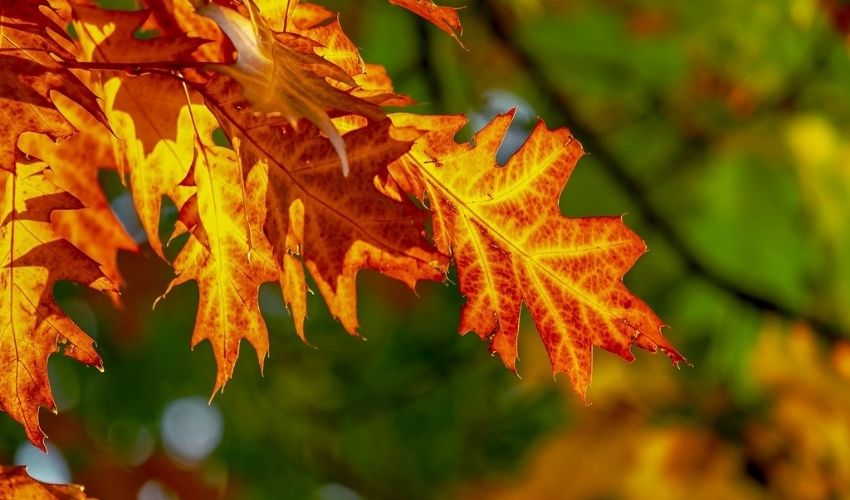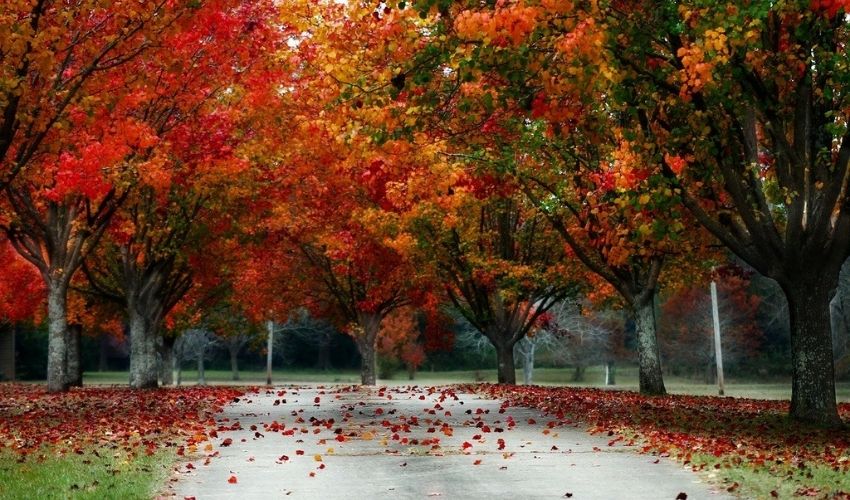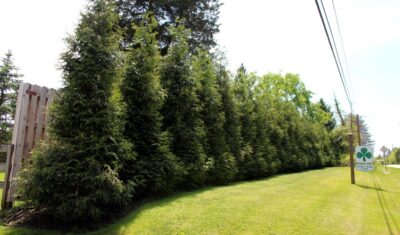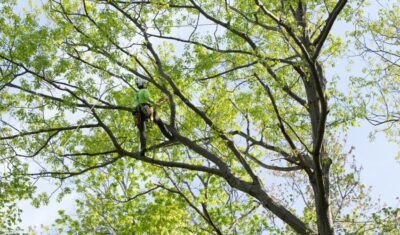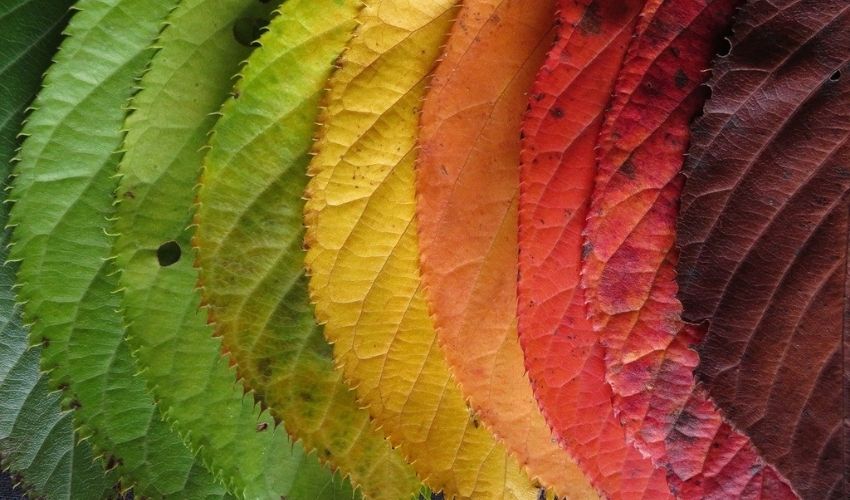
As summer in northeast Ohio reaches its end, you’ll start noticing that the hours of daylight are shorter, the sun’s angle is gentler, and evenings are cooler. All this means that before too long it will be time for one of the year’s most beautiful sights: the rich fall hues of tree leaves changing color.
Each autumn, deciduous trees drop their leaves, but not until after they’ve given us a season finale of red, yellow, orange, gold, and maroon. Why do the leaves on deciduous trees change color and then drop to the ground? Read on to learn more.
What kinds of trees make colorful fall leaves?
You already know that trees are classified as either evergreen or deciduous, depending on their genus and species. A deciduous tree puts out new leaves each spring, and those leaves live for just one growing season. It is these annual, deciduous leaves that give us showy fall colors.
Why are leaves green in spring and summer?
During spring and summer, trees make chlorophyll and food for the tree. Chlorophyll is created by the reaction of specialized leaf cells to sunlight and it’s what makes leaves look green.
But fall’s cooler weather and shorter days signal to the tree that dormancy is coming and it’s time to close up shop for the winter. This end-of-season signal also means that the process that makes chlorophyll (and, therefore, makes leaves green) will stop, too.
So what’s happening that makes leaves change colors?
The cooler days and reduced hours of sunlight will eventually cause winter dormancy in the tree. But in the fall, these changes signal the tree that it’s time to cut leaves off from the tree’s internal system that sends food and water to each leaf. This cutting off of resources is called abscission and is a natural process of separation in the cells of plants and trees. Abscission is what causes flowers, seeds, and ripe fruit to drop, as well as fall leaves.
FUN FACT:If you examine a twig or branch, you’ll often find the remnants, or scars, of previous leaf abscission on the bark’s surface. In many species, these leaf scars are an important way to identify a tree, particularly during dormancy when its branches are bare.
When a tree cuts off its connection to a leaf, it cuts off resources that support two important processes.
First, it halts photosynthesis, the process that those specialized leaf cells employ to convert sunlight, carbon dioxide, and water into energy.
Second, it stops the leaf’s chloroplasts from working. These are the specialized cells within a leaf’s structure that produce green chlorophyll during photosynthesis.
When a leaf stops photosynthesizing and stops producing chlorophyll, it stops being green.
What makes fall leaf colors appear?
Chlorophyll is a strong green pigment, strong enough to mask other colors that are present in leaves during the growing season. But once the green chlorophyll in a leaf is gone, other colors in the leaf are exposed.
These are the most common of the previously camouflaged colors in leaves that are displayed when chlorophyll is removed:
- Xanthophylls, cells that we see as yellow
- Carotenoids, cells that we see as yellow-orange and orange
- Anthocyanins, cells that we see as pink and red
What determines which color the leaves will be in fall?
The exact color of orange, yellow, or red that a tree displays will depend on its species, as well as a tree’s overall health. Trees stressed from summer heat or drought often have disappointing fall colors and leaves can turn a dull brown instead of a blazing red or orange. Some trees, such as many oaks, turn brown naturally.
Why do fall leaves change color so fast?
The green color of chlorophyll disappears quickly after a leaf stops producing it. The other leaf pigments our eyes read as yellow, orange, or red disappear more slowly. This is why fall’s brilliant foliage colors appear from previously green leaves, and also why fall foliage displays are so fleeting. You can’t slow down these natural processes; their briefness is what makes them special.
How can I get more fall color in my garden?
If you want to learn more about our best tree suggestions for fall color, we’ve got you covered. You can read about the size and habit of trees that will display brilliant fall color, and choose the right one for your garden.
If you’re not sure which tree to choose or where to plant trees in your garden, give us a call. We can help you choose the right tree, plant it for you, and then make sure it gets all the right care to ensure a long and healthy life.
Trees are important for all of us
This fall, be sure to get outside and admire northeast Ohio’s many deciduous trees as they change color. There are many benefits to spending time in nature and around trees, even if it’s just out the door in your own backyard.
If you want to explore beyond your backyard, there are beautiful destinations nearby where you can surround yourself with trees. The Cleveland Botanical Garden and the Holden Arboretum offer trails and vistas to safely explore, as well as online resources for children and adults.
Are your trees changing color too early?
If the leaves on your trees are changing color but it seems too early, it may be a sign of something else. Contact Independent Tree to schedule a tree inspection to determine if your changing leaves are just a sign of the season...or something more.Recent Articles
Topics
About The Author

STAY IN THE LOOP
WITH OUR
LATEST UPDATES
"*" indicates required fields

